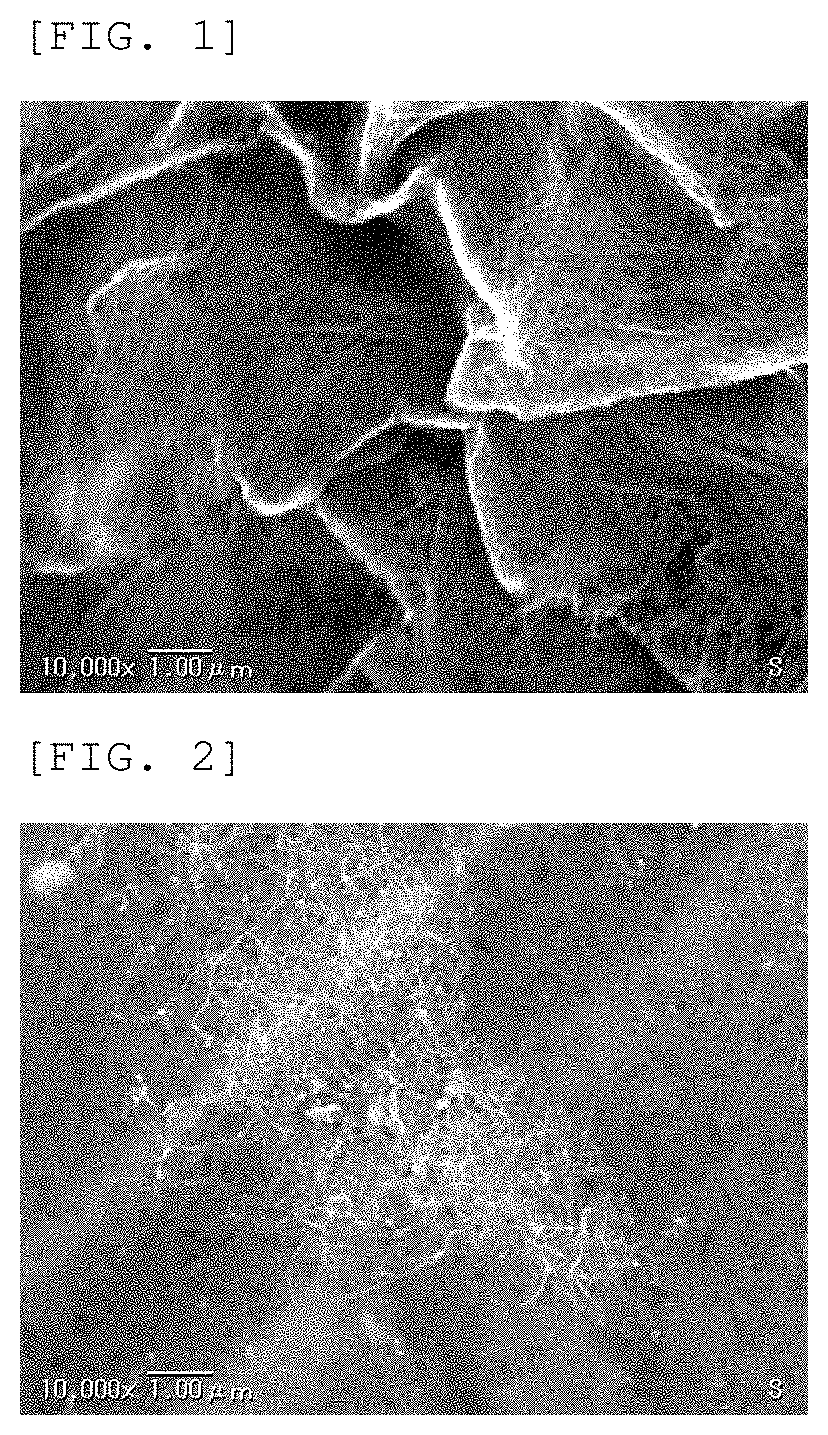Composite resin material and molded body
a composite resin and resin material technology, applied in the field of composite resin material and molded body, can solve the problems of the dispersibility of carbon nanomaterials in resin materials, and achieve the effect of low volume resistivity and unlikely increase of volume resistivity
- Summary
- Abstract
- Description
- Claims
- Application Information
AI Technical Summary
Benefits of technology
Problems solved by technology
Method used
Image
Examples
example 1
[0102]First, 500 g of a carbon nanotube dispersion using water as a solvent (dispersant=0.15% by mass, carbon nanotubes=0.05% by mass) was diluted by adding thereto 3,500 g of ethanol. Then, 1,000 g of the PCTFE particles 2 was added to the resultant to prepare a mixed slurry.
[0103]Next, the thus prepared mixed slurry was fed to a pressure-resistant vessel, and liquid carbon dioxide was fed thereto at a rate of 0.03 g / min with respect to 1 mg of the dispersant contained in the mixed slurry in the pressure-resistant vessel, after which the pressure and the temperature inside the pressure-resistant vessel were raised to 20 MPa and 50° C., respectively. While maintaining the pressure and the temperature for 3 hours, carbon dioxide was discharged from the pressure-resistant vessel along with the solvents (water and ethanol) and the dispersant that were dissolved in carbon dioxide.
[0104]Thereafter, the pressure and the temperature inside the pressure-resistant vessel were reduced to atmo...
example 2
[0105]A resin material of Example 2 was obtained in the same manner as in Example 1, except that the amount of the CNTs was changed to 0.05% by mass based on the composite resin material to be obtained.
example 3
[0106]A resin material of Example 3 was obtained in the same manner as in Example 1, except that the amount of the CNTs was changed to 0.1% by mass based on the composite resin material to be obtained.
PUM
| Property | Measurement | Unit |
|---|---|---|
| specific surface area | aaaaa | aaaaa |
| particle diameter | aaaaa | aaaaa |
| volume resistivity | aaaaa | aaaaa |
Abstract
Description
Claims
Application Information
 Login to View More
Login to View More - R&D
- Intellectual Property
- Life Sciences
- Materials
- Tech Scout
- Unparalleled Data Quality
- Higher Quality Content
- 60% Fewer Hallucinations
Browse by: Latest US Patents, China's latest patents, Technical Efficacy Thesaurus, Application Domain, Technology Topic, Popular Technical Reports.
© 2025 PatSnap. All rights reserved.Legal|Privacy policy|Modern Slavery Act Transparency Statement|Sitemap|About US| Contact US: help@patsnap.com

